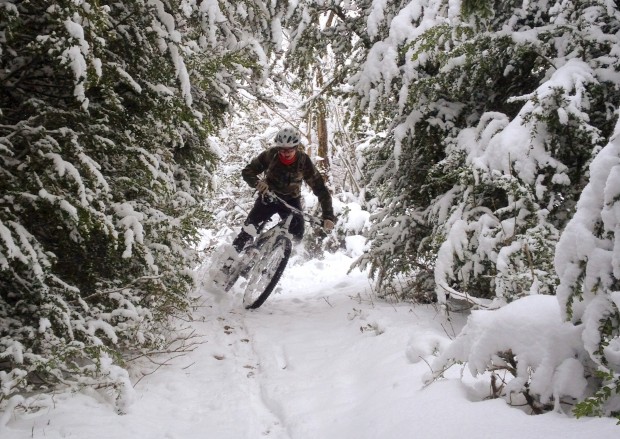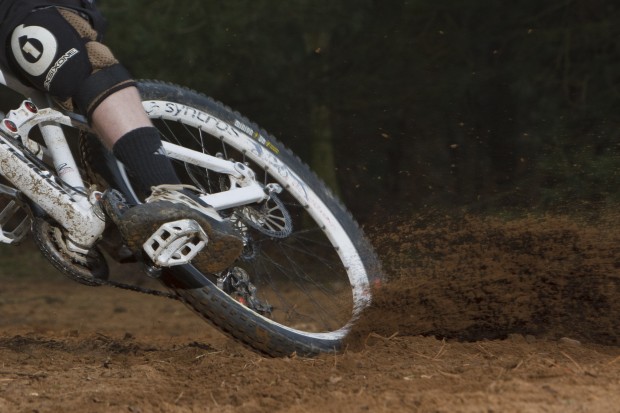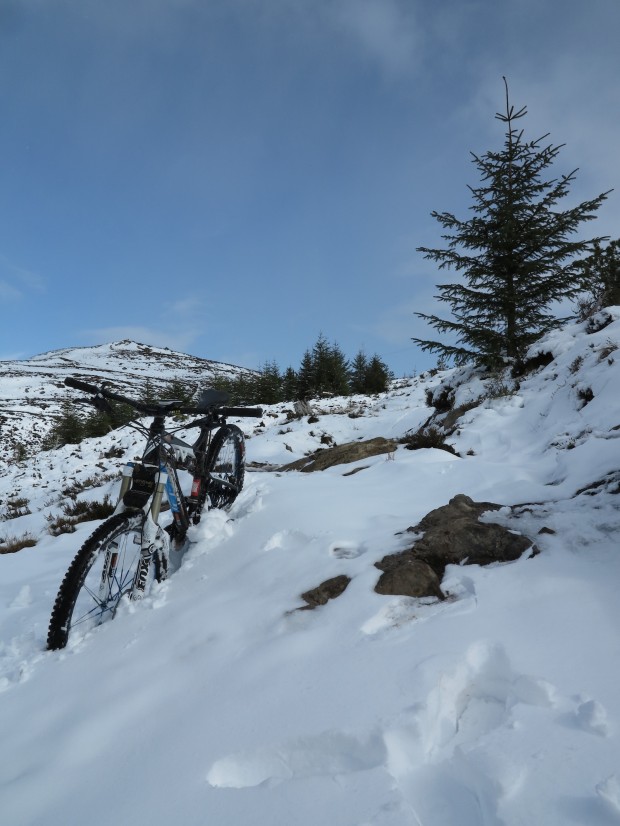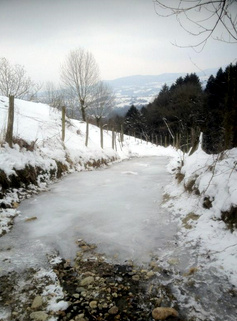Welcome to the A-Z of skills and technique, a bi-weekly look into the language around skills tuition with some useful riding tips thrown in for good measure.
Words: Clive Forth
Photos: Frazer Waller
With the onset of winter and reports of snow on the social network scene we should get down to the business of Ice.

I is for Ice Ice baby…
Stop. Collaborate and listen: Ice is back with a brand new invention.
Apologies to the younger generation, you have probably never heard of the legendary Vanilla Ice, many people who are aware of him will recognise the opening line from his 1989 smash hit Ice Ice Baby. Few are aware that as well as being a lyrical genius (insert cough cough here) he was also Jet Ski World Champion.
Hip Pop trivia out the way, let’s look at riding Ice.
ice |īs|
noun
1 frozen water, a brittle, transparent crystalline solid: the pipes were blocked with ice.
2 informal diamonds.
3 informal an illegal profit made from reselling tickets.
• money paid in graft or bribery.
When I hear people talking about snow riding and ice there are often a couple of words used that confuse me: unpredictable and uncertain. Somehow people seem to think there is an element of unpredictability about riding in these conditions, but it’s simply not true. A bold statement perhaps?
Let me explain. We can easily deduce that no matter how skilled you are or what you do you will inevitably break traction at some point and slide. That is to say there is an element of predictability and certainty about it. You’re gonna slide!
Knowing this and owning the knowledge that snow and ice is actually predictable we can start to take the bull by the horns and bring in an element of control.
Master and avoid disaster.
Step by step you can learn to control slides; I just spent a few hours over the weekend working with my wife Daria helping her to induce inertia drifts (two wheel slides without using brakes).

Learning to induce controlled slides helps you build that all-important muscle memory, thus enabling you to react instinctively rather than panicking and doing something counter-productive when a wheel slides out.
Falls from the bike are either linked to a stall or, in this scenario, a slide. When a slide suddenly occurs there is a tendency to tense up and fight the slide, this often results in an unnerving scenario or a trip to the dirt cafe.
What has happened in the above “tense” scenario? In this instance I deduce that the slide has come to you, rather than you taking the bike to it. Essentially nobody other than a stunt man wants to fall.
It’s rare for us to push the envelope and take it to the edge of control, this is what I was eluding to in my Opposite Pedal piece on Tech and the question: “how many of us actually take technology anywhere near to its limits?”

Many people simply ride within their comfort zone and never get anywhere near the limit of traction into the next level world of mountain biking and friction, even though one of the fundamental principals of what we are doing is the physics of friction.
Now this safe and sensible methodology of riding may seem sane but in actual fact it’s just leading you up the garden path of inevitability. The “avoided at all costs” outcome of a fall then occurs because the “safe and steady, need to be at my desk on Monday” approach has not geared you up and prepared you for this situation.
There is no in-built safety mechanism of instinctive muscle memory and limb movement to save you. All hell breaks loose as the bike breaks loose below you and a wash out or “crash” is on the cards.
The fear of falling stops many from going there and this is counter productive to progression and riding safely, inevitably in mountain biking there will come a day where a wheel breaks traction/friction and we start to slide out.
So how to induce a drift and learn to feel comfortable with tyres sliding beneath us?
This is where snow and slippery mud can be a great help, not a hindrance.
Exercise 1:
- Find a slight gradient in an open area with lots of “run off” space, no hard objects in the ground to hit if you do drop it
- Ride in a strait line a bit faster than jogging pace (speed control) and set up to take a corner – see notes in C for corner
- With footwork dialled, lean the bike in and take the inner foot off, speedway style for added safety and carve a smooth 90º turn.
Easy right? Ok so do this a few times to create a “ride line” in the grass/snow, now you have a good visual line to follow we can start to pick the pace up.
Exercise 2:
- Ride into the turn faster, lean further, increase the pressure in that outer foot with a heel drop and start to push the back end of the bike out. You may be surprised at exactly how much grip is available
- Repeat the exercise going faster on each run until the rear wheel starts to break free and slide
- To control that slide and reduce the slip, steer into the slide with “opposite lock” or “counter steering”
Now you are in “over steer” and controlling rear wheel slides, you will also find yourself getting quite a good work out going back and forth. Next it’s time to induce a front wheel slide, this is the one people fear the most, but don’t fret. It’s easy and safe, remember you are in control and will “take it there”, no nasty surprises.
To induce front wheel slide (under steer) we need to lower the pace back down to jogging pace and tighten up the end of our corner, we are now looking for our exit to be tighter than 90º.
Exercise 3:
- Ride in as before and set up for the corner, lean the bike in and as the corner tightens up increase the effort in your steering input by pushing forward with the outer grip, this will cut the tyre into the surface.
- As your confidence builds, ride in slightly faster each time and push through forwards harder and harder with the outer grip while tightening up the corner until the front wheel breaks traction and starts to slide. AVOID PULLING ON THE INNER GRIP AS THIS WILL INCREASE THE RISK OF DROPPING YOU INTO THE DIRT CAFE FOR A CHOCOLATE SUNDAY.
- To help control the front wheel slide you need to counter-steer away from the direction you are turning by easing the pressure with that forward push from the outer grip, bringing the bike more upright will also help the front tyre engage fresh rubber and grip. A lot of people think you need to steer/turn harder, this will not ease the sliding motion.
Continue to push the pace and play with pressure through the outer foot and outer grip and in no time at all you will be doing two-wheeled drifts while playing with the balance between over and under steer.
With a confidence boost on what will inevitably be your favoured way to corner, break free and challenge yourself by creating a corner in the opposite direction. Bring an element of science and consistency to this exercise by using a consistent start point for your run in while making a note of the gear you used, how many pedal strokes on the approach and how much effort you put in.
Now that the party is jumping. With the bass kicked in and the Vegas are pumpin’. Quick to the point, to the point no faking. I’m cooking MCs like a pound of bacon.
(Thanks Vanilla)
Ice Ice Baby.
Spotting the tell tale signs:
Know the trail your riding? Have a good idea where water runs and lies? Bingo! You have already detected that potential slide zone and can pre-empt potential drift.

Riding trail blind, look at the lie of the land around you and try to visualise where water will pool and gather, adjust your speed accordingly at all times in freezing conditions, listen to the crackle below wheel.
When the trail is snow-covered, spot for that suspicious “pan flat” section of trail, brake lightly and avoid sudden changes in direction.
Remember:
Keep your eye on the ball, look ahead and read the trail, adjust speed accordingly.
Stay relaxed, calm and supple. Let the bike move around below you and avoid wrestling with it, go with the flow.
Adjust your speed, brake in a sympathetic fashion and move the bike below you in a smooth, gradual motion.
Ride just off the line, up and out of low-lying areas. Be aware of the possible camber below tyre.
On steeper gradients where you need to use more braking power, lower your speed early on the entrance to the section, gentle on the levers, if a wheel locks then release the pressure on the brake and slowly, gently feed the brake back in and on.
Avoid:
Sudden, sharp movements of bike and body.
Braking in a harsh fashion, grabbing the levers. Brush up on Braking skills with the letter B in this series.
Tensing up, going stiff like you’ve just jumped in a cold shower.
Remember practice makes permanent, we can write and read so much but inevitably you need to get out there and have a go; feeling is everything in this game. There is a fundamental difference in the feeling and outcome of a “controlled drift” to a “wash out”.
I will leave you with some words of wisdom from assistant Vanilla Ice… Till next time, hang loose and get ya drift on.
Love it or leave it. You better gain way. You better hit bull’s eye. The kid don’t play. If there was a problem. Yo, I’ll solve it. Check out the hook while my DJ revolves it
Clive Forth. MTBSkills, Transition Bikes.
Follow Clive on twitter – twitter.com/cliveforth




